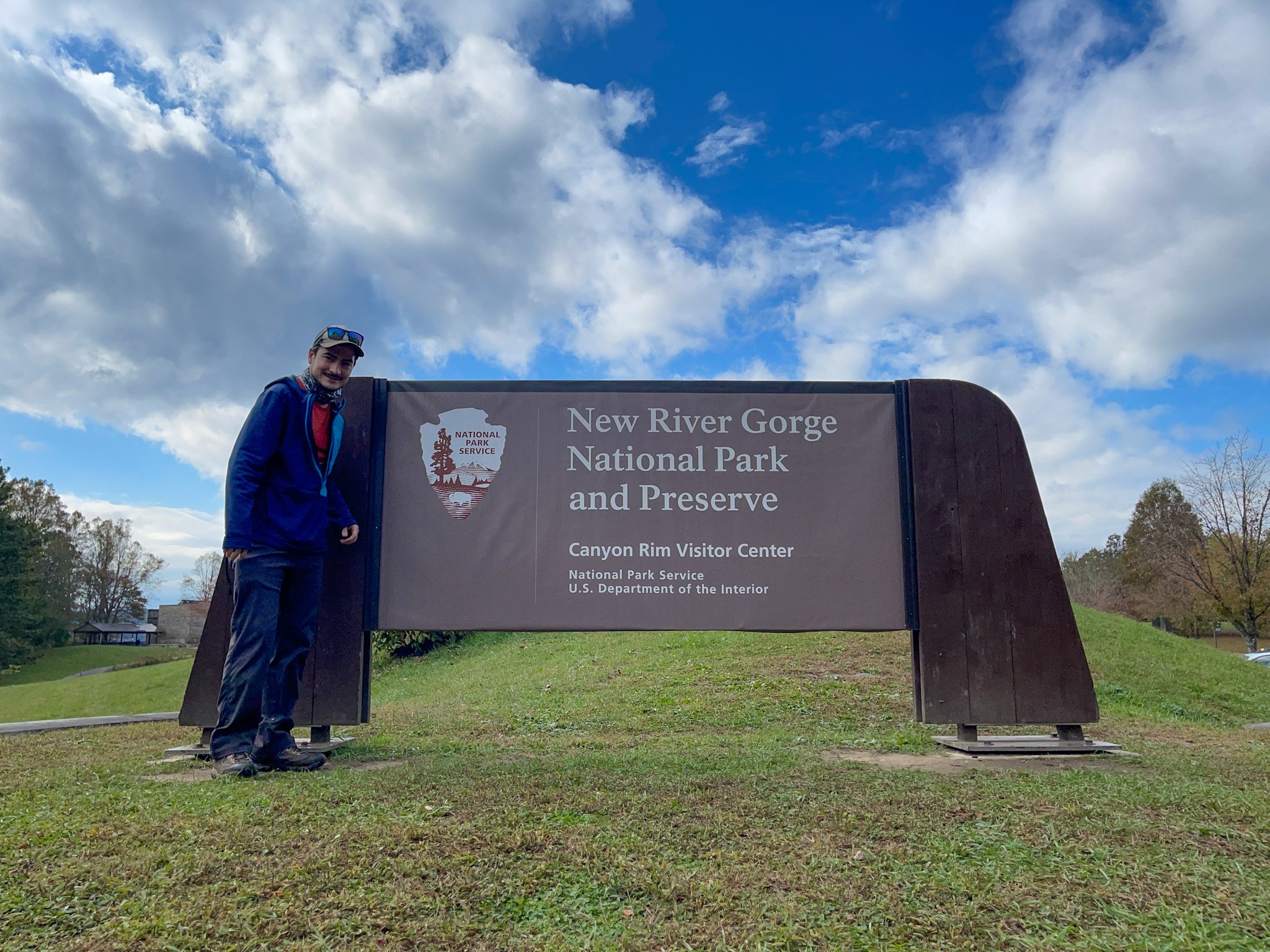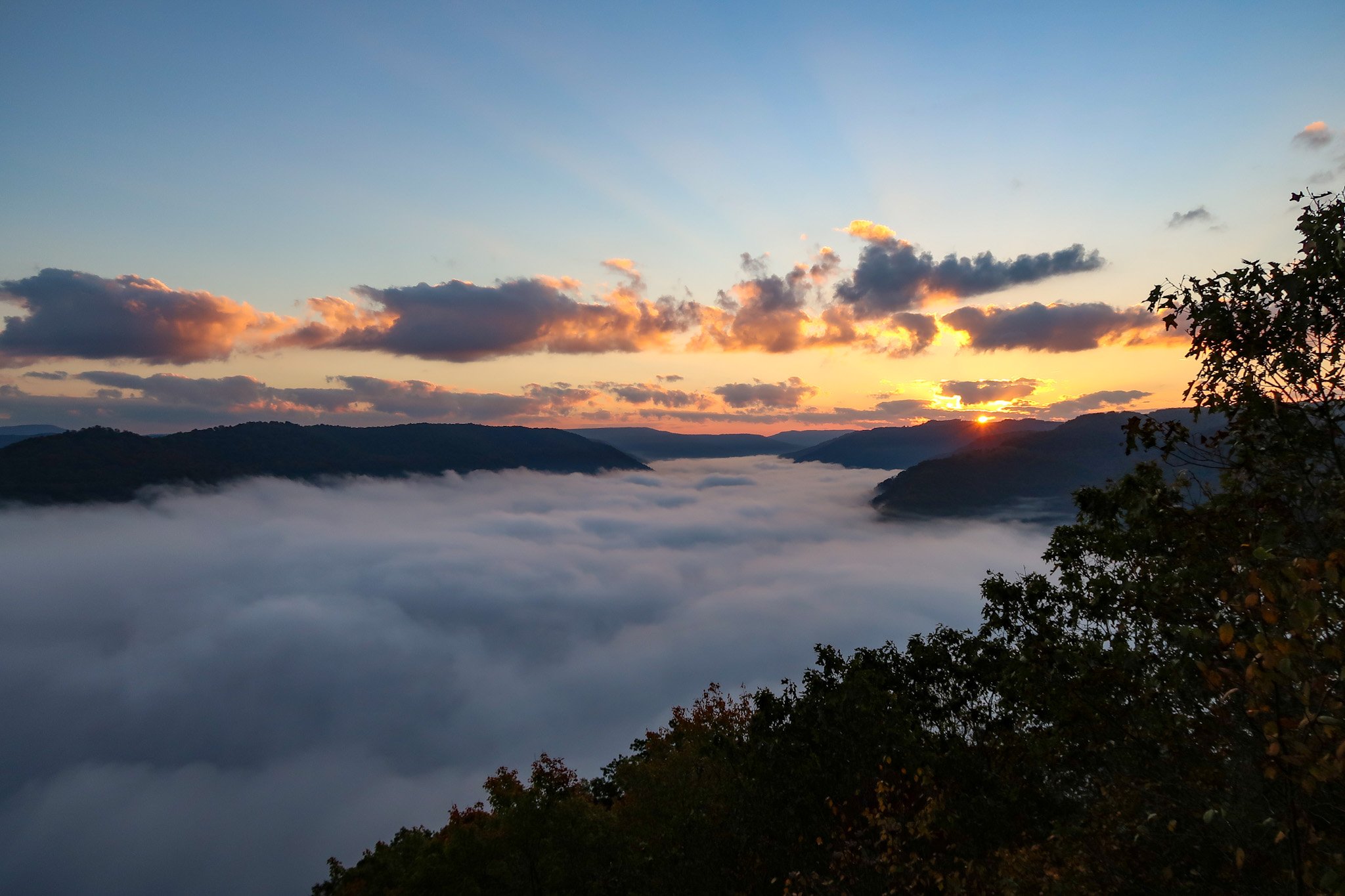Road Tripping Through the National Parks: West Virginia
West Virginia is generally considered to be one of the most underrated states in terms of natural beauty so it’s a great choice for our next “Road Tripping Through the National Parks”. Its underrated natural beauty is due to its mostly rural setting, but that does mean getting to this state may be a bit difficult. If you are able to get to Yeager Airport near Charleston that would be a great place to start. Pick up your rental car, and take the two hour drive to Pipestem Resort State Park.
All of the parks on this trip will be based around water so it will be a rafter and paddlers dream. Most of my recommendations are hiking focused, but all of these parks have rafting and paddling options that you should take advantage of. The first national park site we are checking out in West Virginia is Bluestone National Scenic River. Bluestone National Scenic River is self explanatory as it preserves a portion of the Bluestone River. This is one of two parks we will be covering that is difficult to access if you are not paddling or rafting. However, one great option to access it is through Pipestem Resort State Park. This is an exceptional park that you are actually going to stay the night at as it has two lodges, cabins and a campsite to choose from. The Bluestone River Trail that runs through the heart of the park is a six and half mile but steep hike that leads you right into Bluestone National Scenic River. The trail is a bit surprising as it begins in a playground and recreation area before it descends into a canyon. There is so much wildlife on this trail. I saw rat snakes, mice and ruffed grouse during my short time there. If you go during the warmer months, you can take a dip in the Bluestone before making the steep ascent back up to your lodging.
You can start day two by taking the thirty minute drive to New River Gorge National Park and Preserve. The park preserves stretches of the New River as well as the interesting rock formations that it has created over time. Despite the name, the New River is one of the oldest rivers in the world. The park is a rock climbing and rafting mecca so if you have experience or want to learn about either of these activities you should spend the day doing that. If, however, you would like to do some hiking, the park has a few fantastic hikes. A quick stop at Sandstone Visitor Center will get you oriented with the park, and I find this visitor center more informative than the Canyon Rim Visitor Center despite the ideal location of the latter. Nearby roads offer great views of Sandstone Falls. An hour long drive will take you to your first hike, the Endless Wall Trail. This is a popular, three-mile trail that offers iconic views of the gorge walls that have been created by the New River. There’s multiple spots to picnic at too. A ten minute drive from there will take you to the Canyon Rim area where you can start your next hike. The Long Point Trail oddly starts in a neighborhood. It does eventually leads to a narrow wilderness that straddles along a cliffside until you get spectacular views of the New River Gorge Bridge. The hike is another short one at three miles without much elevation gain, but be wary of the steep cliff sides that you will walk past. Conclude your day by checking out the area around the Canyon Rim Visitor Center. One trail behind the visitor center follows a boardwalk to up close views of the New River Gorge Bridge.
Day three starts with an early wake up call to catch the sunrise at Grandview. This is a section of the park that overlooks a turn in the river. It’s a dramatic view with the sun rising behind it especially when you get one of those mornings where the river builds up the fog. It’s about an hour drive to your next location: Gauley River National Recreation Area. This is the other difficult one to access if you are not into rafting as it was created to preserve the best rapids on the Gauley River. If you don’t feel like getting on the water you can travel to Carnifex Ferry Battlefield State Park, which is where a minor American Civil War battle took place. If you take the two mile Patterson Trail you can get great views of the Gauley River and the landscape that it creates. Now begins the hard part as you have to take a four hour and forty-five minute drive to the Harpers Ferry, West Virginia area to conclude your day.
Harpers Ferry National Historical Park preserves a natural and historical epicenter at the confluence of the Potomac and Shenandoah Rivers. It’s located right at the tri-state point of Maryland, Virginia and West Virginia. There’s numerous bird species that live here including great blue heron and peregrine falcons. People who have visited this area range from George Washington, Thomas Jefferson and Lewis and Clark to Ulysses S. Grant and Robert E. Lee. The park’s main visitor center is pretty bare bones and is really just there to collect the park entrance fee. To get to the good stuff you have to get to the historical town. The park offers a shuttle, but the walk to the town is only a couple of miles and offers great views of the Shenandoah River and various historical ruins. The two highlights of the historical town are the bookstore (Harpers Ferry actually serves as a major center for the National Park Service so items from multiple parks are on sale here) and the visitor contact station, which is located in one of the few buildings that both Ulysses S. Grant and Robert E. Lee have slept in. There’s so many hiking opportunities in the park, but your best bet is to take the bridge over to the Maryland side and hike the Maryland Heights area. As you take this journey, you actually walk through multiple other national park sites including the Appalachian National Scenic Trail, Chesapeake & Ohio Canal National Historical Park and Potomac Heritage National Scenic Trail. The main trail in the Maryland Heights leads to the iconic view of the historical town, but if you continue on for a larger loop you can walk through Civil War era earthworks and battery locations. Soak up as much of your time here as you can because it’s the last stop on your trip as you make your way back to one of the Washington D.C. area airports. It’s glorious, though, as Harpers Ferry National Historical Park is one of my favorite parks in the entire system.





